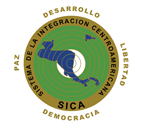The Fisheries and Aquaculture Sector Organization of the Central American Isthmus (OSPESCA), the Central American Integration System (SICA) agency for fisheries, has announced a ban, to take effect from 1 March to 30 June, on trapping of Caribbean spiny lobster in order to protect the species during its reproductive phase.
 27 February 2012: The member countries of the Central American Integration System (SICA) have imposed the third annual joint temporary ban on capturing the Caribbean spiny lobster (Panulirus argus) in order to protect the migratory species. While not yet officially declared an endangered species, scientists suspect the Panulirus argus stocks to be under heavy pressure from commercial fishing. The Central American ban, announced on 27 February 2012, will be in effect from 1 March until 30 June. It is intended to cover the lobster’s principal reproductive period.
27 February 2012: The member countries of the Central American Integration System (SICA) have imposed the third annual joint temporary ban on capturing the Caribbean spiny lobster (Panulirus argus) in order to protect the migratory species. While not yet officially declared an endangered species, scientists suspect the Panulirus argus stocks to be under heavy pressure from commercial fishing. The Central American ban, announced on 27 February 2012, will be in effect from 1 March until 30 June. It is intended to cover the lobster’s principal reproductive period.
Imposed by SICA’s Fisheries and Aquaculture Sector Organization of the Central American Isthmus (OSPESCA), the ban covers the entire Caribbean coastline of Central America, including Belize, Guatemala, Honduras, Nicaragua, Costa Rica and Panama. It is part of a set of mandatory measures contained in Regulation OSP-02-09, adopted by OSPESCA on 21 May 2009, after years of attempting voluntary national and/or regional bans on trapping Panulirus argus during the reproduction period. The seasonal ban was first imposed in 2010, and again in 2011.
In addition to the seasonal bans, the OSPESCA Regulation also: bans altogether the capture, holding and sale of Panulirus argus found in their reproductive phase, spawned, with spermatheca or moulting; requires navigation permits; sets lobster inventories; and regulates the number of lobster pots per boat, minimum size for harvesting and trade, and escape gaps in the pots.
According to OSPESCA statistics, some 60,000 people in Central America are involved in the capture, sale and export of Panulirus argus, bringing some US$450 million in annual income to the region. [IISD RS Sources]